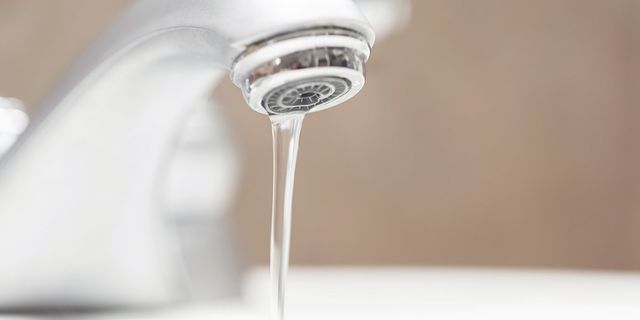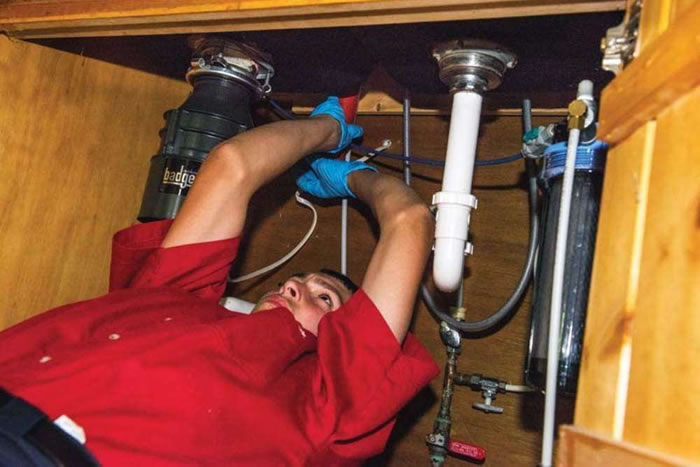The content on the next paragraphs involving Low Water Pressure in the House? is exceptionally interesting. You should investigate it.

Low water stress in your home can be an irritating problem, influencing whatever from bathing to washing recipes. If you're experiencing weak water circulation, there are numerous feasible causes and solutions to discover. In this guide, we'll go over common reasons for low water pressure and practical actions to address the concern effectively.
Introduction to Low Water Stress
Low tide stress happens when the circulation of water from your taps, showers, and other components is weaker than common. This can make day-to-day jobs extra tough and less efficient. Recognizing the reasons for low water stress is vital to discovering the best solution.
Common Causes of Low Water Stress
Faulty Stress Regulatory Authorities
Stress regulators are accountable for preserving constant water stress in your home. If they malfunction, it can result in low water pressure or irregular circulation throughout your house.
Municipal Water Supply Issues
Occasionally, the trouble lies outside your home. Metropolitan supply of water problems, such as main line leakages or maintenance work, can briefly lower water pressure in your area.
Pipeline Obstructions
Over time, pipelines can come to be clogged with natural resource, sediment, or particles, limiting the flow of water. This is a typical problem in older homes with galvanized steel pipes.
Corrosion
Deterioration within pipes can lead to leaks and lowered water stress. Rust accumulation can restrict water flow, specifically in maturing plumbing systems.
Exactly How to Diagnose Low Tide Pressure
Examining Pipelines
Check visible pipelines for indicators of leaks, corrosion, or clogs. Pay attention to any kind of unusual audios, such as banging or rattling pipelines, which could indicate problems within the plumbing system.
Consulting with a Plumber
If you're not able to determine the source of low tide pressure, take into consideration hiring an expert plumber to perform a detailed assessment. They can recognize underlying problems and advise proper options.
Checking Faucets and Components
Begin by checking the water pressure at different faucets and fixtures throughout your home. If the problem is separated to specific locations, it might suggest localized troubles.
DIY Solutions to Repair Low Tide Stress
Flushing Hot Water Heater
Debris buildup in the hot water heater can restrict flow and reduce efficiency. Purging the container regularly assists remove debris and preserve ideal efficiency.
Checking Pressure Regulatory Authority
Make certain that the stress regulator is working properly. Changing or replacing the regulator can help restore proper water pressure throughout your home.
Cleaning Aerators and Showerheads
Natural resources can gather in aerators and showerheads, lowering water flow. Get rid of and cleanse these elements consistently to boost water pressure.
Cleaning Clogs in Pipeline
For minor obstructions, try making use of a plumbing serpent or chemical drain cleaner to clear obstructions in pipelines. Be cautious when using chemicals and comply with safety guidelines.
When to Call an Expert Plumber
If DIY initiatives fall short to fix the problem or if you think substantial plumbing troubles, it's finest to look for help from a licensed plumber. They have the competence and tools to address intricate concerns securely and effectively.
Preventive Measures to Preserve Water Pressure
Installing a Stress Booster
Consider mounting a stress booster pump to enhance water stress in locations with consistently reduced flow. This can be especially beneficial for multi-story homes or properties with high-demand fixtures.
Tracking Water Usage
Be mindful of water usage practices and prevent overtaxing the plumbing system. Straightforward modifications, such as incredible showers and washing tons, can help preserve sufficient water pressure.
Regular Upkeep
Arrange routine maintenance for your plumbing system to avoid issues such as rust, leaks, and clogs. Addressing minor problems early can aid prevent even more considerable repairs in the future.
Final thought
Handling low water stress can be irritating, yet recognizing the underlying causes and carrying out ideal options can bring back optimum flow throughout your home. Whether it's cleaning aerators, inspecting pipes, or talking to a plumber, taking proactive steps can make sure a constant supply of water for your day-to-day needs.
FOUR WAYS TO FIX LOW WATER PRESSURE NOW
Turning on a shower or faucet only to find the water comes out in a sad, slow drizzle is never a good feeling. How exactly are you supposed to wash a pan or take a quick shower when it takes 10 minutes just to rinse off a little soap? The good news is that when your water pressure is bad, there's always a cause: typically one that can be easily fixed. Here are some of the most common causes of low pressure and what you can do to fix the issue:
DEBRIS AND MINERAL DEPOSIT BUILDUPS
If you notice low water pressure from just one or two of the fixtures in your house, the problem likely has to do with debris buildup. Water is full of minerals and other debris, all of which can accumulate in your pipes and on your fixtures. This can cause a blockage that affects how much water flows through. To fix this, try filling a small plastic bag with white vinegar, and use a rubber band to hang it around your showerhead or faucet. Let the head of the fixture soak for a few hours, and the vinegar should loosen the deposits.
WATER LEAKS
Leaks are another common cause of low water pressure. If water is flowing out of your plumbing through a hole or crack before it can reach your fixture, the pressure coming out of the faucet or showerhead will be lower. A plumbing professional is your best bet for finding and repairing a leak in your water supply pipes.
Leaks are another common cause of low water pressure. If water is flowing out of your plumbing through a hole or crack before it can reach your fixture, the pressure coming out of the faucet or showerhead will be lower. A plumbing professional is your best bet for finding and repairing a leak in your water supply pipes.
A VALVE ISSUE
If you have low water pressure throughout your home, check your main shut-off valve to make sure it's completely open. You may also want to see if there's a pressure-reducing valve installed. If there is, have a plumber help you adjust the settings to get the pressure you're looking for.
OTHERS USING WATER
Believe it or not, your low water pressure could be caused by your neighbors. If you notice low pressure at certain times of day, it may be because you and the people living next to you have similar schedules - when everyone is showering at the same time, the pressure will be lower in every home. Low pressure throughout the neighborhood may also be caused by an issue with your municipal water supply. If that's the case, call the supplier to see if they're working on the issue.
https://www.rotorooter.com/blog/water-leaking/low-water-pressure-fixes/

I stumbled upon that page about 10 Reasons for Low Water Pressure in Your House when doing a search on the internet. Sharing is nice. One never knows, you will be helping someone out. Thank-you for going through it.
Call
Comments on “An Handbook to Addressing Low Water Pressure in Your Home”